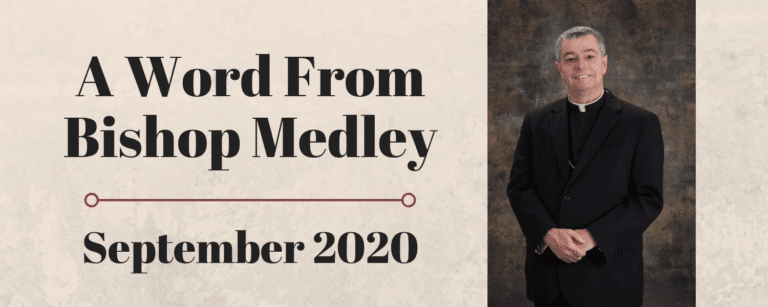The one symbol most associated with Jesus and his Church is the cross. The image marks churches, schools, hospitals. A cross, often with an image of the body of Jesus and thus called a crucifix, is to be found in hundreds of millions of homes around the world. We wear crosses on our persons as a mark of faith, sometimes as jewelry or decoration.
On September 14 each year we observe the feast of the Exaltation of the Holy Cross, or the Triumph of the Holy Cross. (And September 15 is the Feast of Our Mother of Sorrows — a companion feast illustrating Mary’s place in salvation history.) On Good Friday, Christians commemorate the Passion and Death of Jesus and we reflect upon the culmination of our salvation story. The Triumph of the Cross is an extension of this reflection, but focuses on the cross itself and that it should identify Jesus’ followers.
Early in the fourth century, St. Helena, the mother of the Roman Emperor Constantine, went to Jerusalem in search of the holy places of Christ’s life named in the gospels. She learned of a tradition that identified the site of the tomb of Jesus. There was a pagan temple erected there, allegedly to discourage Christians from venerating the site. She directed that the temple should be razed. We assume as the mother of the emperor she could do anything she desired. Subsequently her son erected the first Basilica of the Holy Sepulcher. That and subsequent churches were built and destroyed as wars continued over the land. But the basilica that stands there in 2020 dates from the 12th century and is thus one of the oldest surviving structures of Christian devotion.
For any who have ever been privileged to make a pilgrimage to the Holy Land, the traditional Via Dolorosa (Way of the Cross) concludes here observing the last several of the 14 stations. Within the basilica there is an altar to mark Calvary Hill where Jesus was stripped of his garments, nailed to the cross, and suffered in agony over three hours until his death, “Into your hands, O Lord, I commend my spirit.” Just yards away is a small mausoleum-like chapel reputed to mark the spot of Jesus’ burial and also then his Resurrection.
According to an article by Loyola Press, “Believers have always looked to the cross in times of suffering. People in concentration camps, in prisons, in hospitals, in any place of suffering and loneliness, have been known to draw, trace or form crosses and focus their eyes and hearts on them.”
The first time I visited the Kentucky State Penitentiary as bishop, an inmate presented to me a beautiful cross that he had carved out of soap.
The Loyola Press article continues, “The cross does not give us easy answers. But it does help us to see our lives united to Christ’s. We often make the Sign of the Cross over ourselves. We make it before prayer to help fix our minds and hearts on God. We make it after prayer, hoping to stay close to God. In trials and temptations the cross is a sign of strength and protection. The cross is a sign of the fullness of life that is ours… by the Sign of the Cross… Jesus takes us as his own in a unique way.”
At Baptism the Sign of the Cross is traced on the forehead. This sign is repeated in the Sacrament of Confirmation.
It is good to look upon the cross with devotion. Every Christian household should display a cross in a place of reverence. In many families a cross – in Catholic families a crucifix – is often an heirloom. I have a crucifix that came from my grandparents that my father remembered from his earliest childhood. It is a custom that a crucifix is often displayed in the casket of the deceased and then becomes a treasured relic for the family. Quite often at Confirmations some of the newly-confirmed receive a crucifix as a gift and they ask me to bless it. I hope that it finds a prominent place in the young person’s life for years to come.
Is there a cross or crucifix in your home? Have you and others of your household paused to give respect and prayer before it?
“We adore you, O Christ, and we bless you. For by your Holy Cross you have redeemed the world.”
Article cited: “The Exaltation of the Holy Cross,” www.loyolapress.com/catholic-resources/saints/saints-stories-for-all-ages/triumph-of-the-cross.
Most Reverend William F. Medley
Diocese of Owensboro
Originally printed in the September 2020 issue of The Western Kentucky Catholic.
Copyright © 2020 Diocese of Owensboro/The Western Kentucky Catholic


